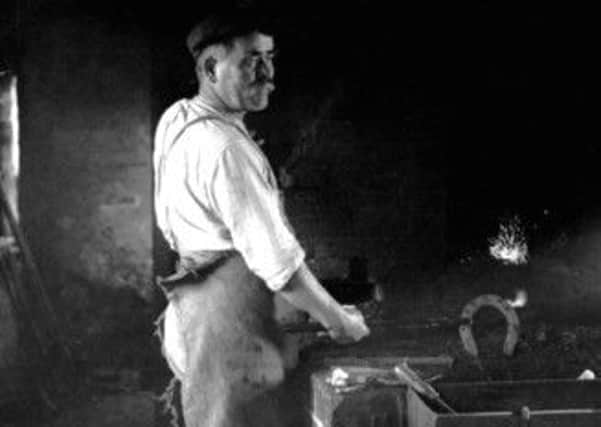Exhibition commemorates First World War farriers


As spokesman Mike Imms explains: “The role of war horses in WWI has of course captured the imagination, but when you think about it, you can’t have war horses without farriers!
“This exhibition is based around the experiences of two farriers from Slindon Forge who served in the army during WW1, Charles Hotston and Gilbert Bleathman, with special thanks to their families and Slindon History Group who provided valuable information and support for this exhibition.
Advertisement
Hide AdAdvertisement
Hide Ad“From the perspective of 2014, it is easy to forget one simple fact; in 1914, virtually everything that moved had a horse in front of it – and a farrier behind it. The exhibition explores three main themes: the importance and role of farriers at the front (they not only shod the 800,000 horses and mules involved in the war but also acted as vets); the importance of farriers on the home front in keeping the nation supplied with food, notably shoeing farm horses and all the horses involved in transporting produce from farm to market; and the many ways WWI speeded up changes (notably mechanisation) that signalled the end of the traditional way of life for the village blacksmith.”
Pictured in uniform is Charles Hotston, who ran Slindon Forge from 1900 to 1914, and served as a farrier sergeant in the Army Service Corps. The picture was taken in Chichester in 1915, just after he had enlisted in the army. He returned to the area after the war and took up farming at Norton.
Pictured by the Slindon Forge hearth is Gilbert Bleathman. He worked with Charles Hotston, and took over the forge just before the war. Bleathman served as a farrier and driver (of horses) in The Royal Engineers.
His work at the front entailed looking after the teams of horses which pulled heavy artillery on the battlefield. He was wounded in the conflict, but returned to Slindon and ran the forge until he retired in about 1940.
Advertisement
Hide AdAdvertisement
Hide AdSlindon Forge served as a traditional village blacksmiths workshop until 2000. In 2012, the historic village building was restored and extended and now serves as a community-owned-and-run village shop and cafe. The exhibition runs until August 31.
For more information visit www.slindonforge.co.uk